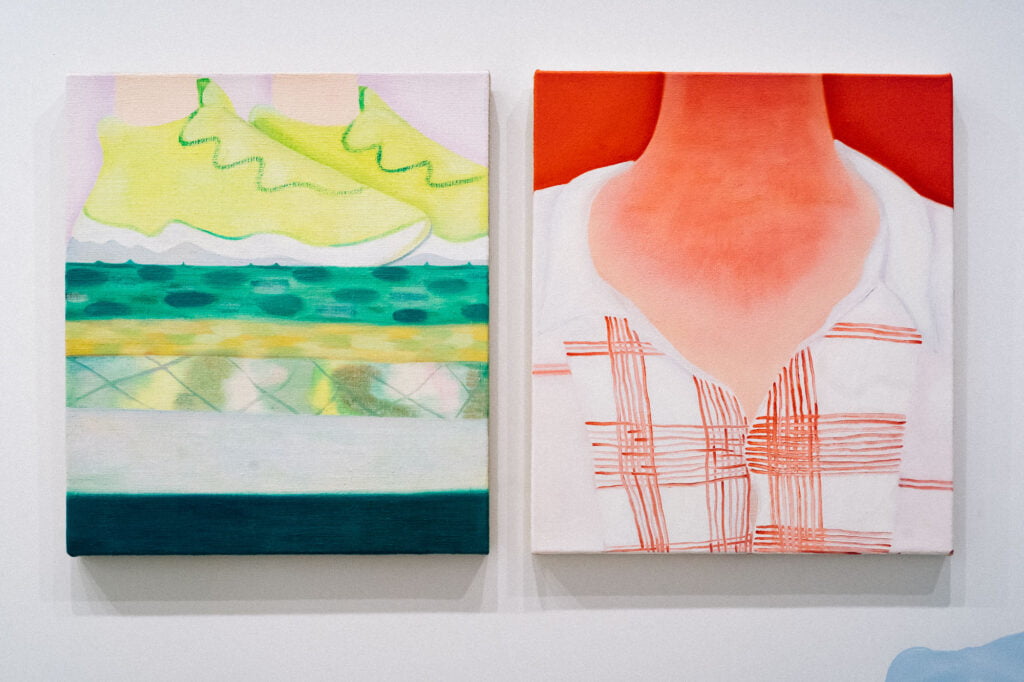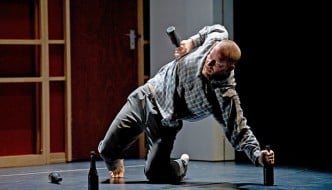
Photo credit: Nick Baines (@peanutkaiser)
With the advent of the Hyde Park Art Club (HPAC) and the first show ‘Chrysalis’ organised as part of it, we have been chatting to the artists involved in the exhibition – their inspirations, materials, process and future plans. First up is Ellie MacGarry whose hypnotising works are charged yet ethereal, simple and strange at the same time.
First of all, could you tell me a bit about your work in general?
I make paintings which depict the body in changing states of transformation or transition. I often focus on areas or viewpoints which might ordinarily go unseen – the back of a head, garments half done up revealing sections of skin beneath, or imagined layers of ground underneath our feet.
Your paintings mostly seem to be fairly small and in the traditional portrait format – is there a reason for this? Was it a conscious decision from the start or did you find that this format suited your style?
Yes the paintings in this show are all quite small, although I do make much bigger paintings too. The formats come about quite naturally really, but I rarely make a painting which is wider than it is tall unless I need the space, as in the double portrait ‘Meeting Place’. With a lot of my paintings I am cropping out anything that might surround the body so it makes sense for it to be that way.

Photo credit: Nick Baines (@peanutkaiser)
A lot of your work is tightly cropped and close to the viewer, eg. the subject’s chest, hands, fingers poking out of holes in pockets. Is it your intention to make the viewer almost uncomfortable by how physically close we feel to the subject?
I definitely want to encourage a sense of closeness between the painting and the viewer. Whether that brings about an uncomfortable feeling is subjective really. I am interested in how, particularly in big cities, we can end up being physically close to strangers’ bodies and confronted by the different qualities or details of these other people. In some ways this is uncomfortable, and in other ways it’s quite comforting.

Photo credit: Nick Baines (@peanutkaiser)
How do you choose your titles? They’re amazing – when looking through your website, each title made me wanna click more than the last one, I had to see them all!
Some titles are in place before the painting is made, they are almost like a note to self – the most concise or brief way of describing the initial feeling or situation which brought about the making of the painting. Others are given after to conjure up a sense of the picture in word form. I love playing with language so I think about words a lot, but I am also interested in brevity. It is important to me that the titles don’t pin things down too much though, I want them to be somewhat open-ended and not a way of answering a question about what a painting is.

Photo credit: Nick Baines (@peanutkaiser)
Do you have any creative plans for the near future, any other shows coming up?
I have an exhibition coming up at Steve Turner in Los Angeles in November so that’s my main focus at the moment. I am making some large paintings of figures underwater and a new series of feet on the ground paintings, so there is a horizontal line running through every painting. It’s not a horizon line necessarily, but it provides a sense of what is above the line and what is below which I am interested in. Besides that I am working on some new watercolours and just generally enjoying myself in the studio!
___
You can see more of Ellie’s work on her website.
You can find out more about HPAC here.
Filed under: Art & Photography
Tagged with: art, artist, Chrysalis, Hyde Park Art Club, interview, leeds, painting, show



Comments